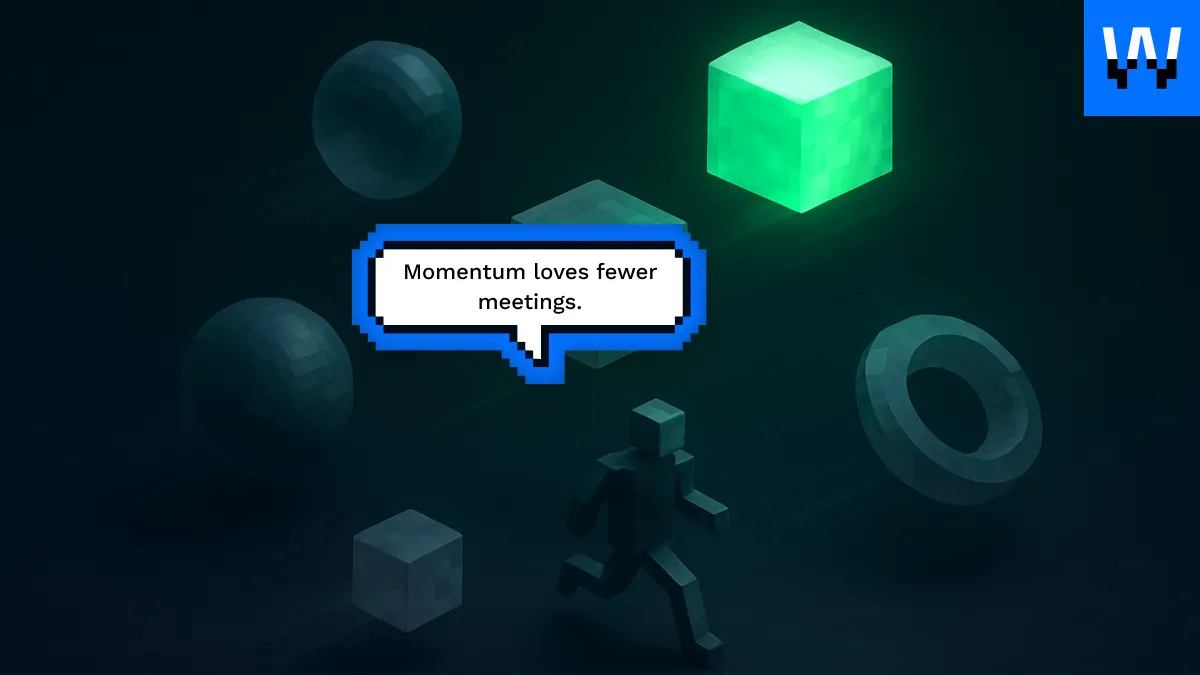Why Traditional Hiring Is Failing Fast-Moving Tech Teams — and What Comes Next?
Introduction
The rules of tech hiring have changed — but most processes haven’t.
Traditional hiring models were built for corporate HR departments, not for agile teams racing to ship product. Long timelines, recruiter bottlenecks, vague CVs, endless interviews — all of it slows you down when you should be speeding up.
In today’s product-driven world, the teams that win are the ones that build fast and adapt faster. That means hiring must be faster, smarter, and more aligned with how engineering actually works.
At Wild.Codes, we work with startups and scaleups who’ve outgrown old hiring logic. Here’s what’s broken — and what comes next.

Problem 1: Time-to-Hire Is a Roadmap Killer
On average, it takes 40+ days to hire a senior developer through traditional channels. That’s more than a sprint cycle — sometimes more than two.
While you're:
- Writing job descriptions
- Filtering noisy job boards
- Scheduling round after round of interviews
...your roadmap sits idle. Or worse — shipped with bugs, burnout, or missing features.
Key stat: 14% annual churn in tech means you repeat this pain every year.
Fast-moving teams can’t afford that lag.
Problem 2: Recruiters Without Tech Context
Many recruiters — even internal ones — don’t understand product requirements or engineering nuance. The result?
- Irrelevant CVs
- Interviews that go nowhere
- Endless back-and-forth with hiring managers
It wastes time, energy, and money.
And for founders wearing multiple hats, doing all this yourself isn’t realistic.

Problem 3: Endless Interviews, Zero Insights
It’s common for startups to run 5–7 rounds of interviews per role — but still end up hiring the wrong person. Why?
Because most interviews:
- Prioritize theoretical knowledge over product impact
- Lack consistency across interviewers
- Fail to assess communication and collaboration skills
You’re screening for puzzle solvers, not team players. That’s a mistake in modern product teams.
Problem 4: CVs Are a Terrible Signal
Wild.Codes insight: We don’t rely on CVs. Our vetting includes async collaboration, codebase familiarity, and how a dev responds to product constraints.
Problem 5: Global Hiring = Admin Chaos
If you do find someone great abroad, now you have to handle:
- Local labor laws
- Payroll & taxes
- Time-off policies
- Compliance documentation
For most startups, this turns a great hire into an operational nightmare.

What Comes Next: The New Era of Hiring for Tech Teams Read Article
Fast teams are ditching the resume roulette and switching to developer marketplaces, AI vetting, and embedded squads. Here’s what modern hiring looks like:
1. Talent-as-a-Service
You subscribe to vetted engineering talent — just like cloud storage or design tools. No long-term lock-ins. Total flexibility.
2. AI-Driven Matching
Platforms like Wild.Codes use AI to pre-vet and shortlist developers who:
- Match your tech stack
- Align with your working hours
- Have verified delivery records
You stop reviewing junk CVs. You start reviewing matches.
3. Outcome-Based Onboarding
Forget "start date" formalities. Modern hiring is about how fast someone can:
- Join a sprint
- Commit clean code
- Communicate in async workflows
Speed-to-impact is the new speed-to-hire.

The Wild.Codes Approach: Built for Product Velocity
We built Wild.Codes because we saw how broken hiring was for high-growth tech teams.
Here’s how our model flips the script:
✅ From Recruiters → To AI + Product Leads
Our matches are reviewed by real engineers and PMs, not generic recruiters.
✅ From CVs → To Live Product Signals
We assess devs based on their past sprints, Git contributions, and startup experience.
✅ From Admin Burden → To Fully Managed Teams
We handle payroll, compliance, PTO, and onboarding. You get engineering velocity — without legal overhead.
✅ From Freelance → To Embedded Builders
Our developers integrate with your rituals, sprints, tools, and culture.

Final Thoughts
Fast-moving product teams can’t afford slow hiring. The traditional model — recruiters, CVs, multi-stage interviews — is built for a different era.
What you need now is:
- Faster matches
- Better cultural and technical fit
- Lower admin overhead
- More predictable delivery
That’s what we deliver at Wild.Codes.
You tell us what you need. We match you with developers in 48 hours. You ship faster — with less risk, and less chaos.
Your roadmap can’t wait. Neither should your hiring.
• PHP expertise;
• Database management skills;
•Jungling traits, methods, objects, and classes;
• Agile & Waterfall understanding and use;
• Soft skills (a good team player, high-level communication, excellent problem-solving background, and many more)
• OOP & MVS deep understanding;
• Knowledge of the mechanism of how to manage project frameworks;
• Understanding of the business logic the project meets;
• Cloud computing & APIs expertise.
• Reasonable life-work balance;
• The opportunity to implement the server-side logic via Laravel algorithms;
• Hassle-free interaction with back-end and front-end devs;
• Strong debugging profile.
• Using HTML, XHTML, SGML, and similar markup languages
• Improving the usability of the digital product
• Prototyping & collaboration with back-end JS experts
• Delivery of high-standard graphics and graphic-related solutions
• Using JS frameworks (AngularJS, VueJS, ReactJS, etc
• Clean coding delivery and timely debugging & troubleshooting solution delivery
• UI testing and collaboration with front-end JS teammates
• Database experience
• Building APIs while using REST or similar tech solutions
• Collaboration with project managers and other devs
• Delivery of design architecture solutions
• Creation of designs & databases
• Implementation of data protection and web cybersecurity strategies.
• Both front-end and back-end qualifications










